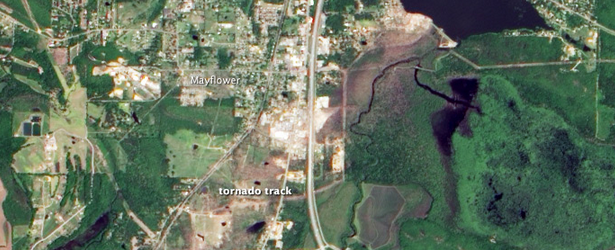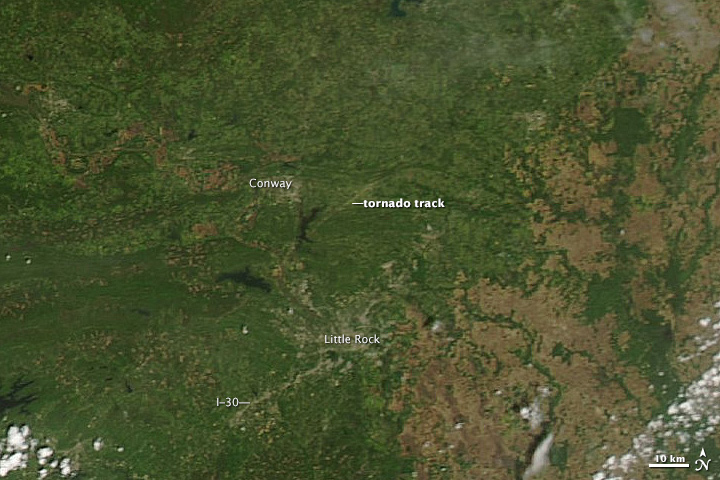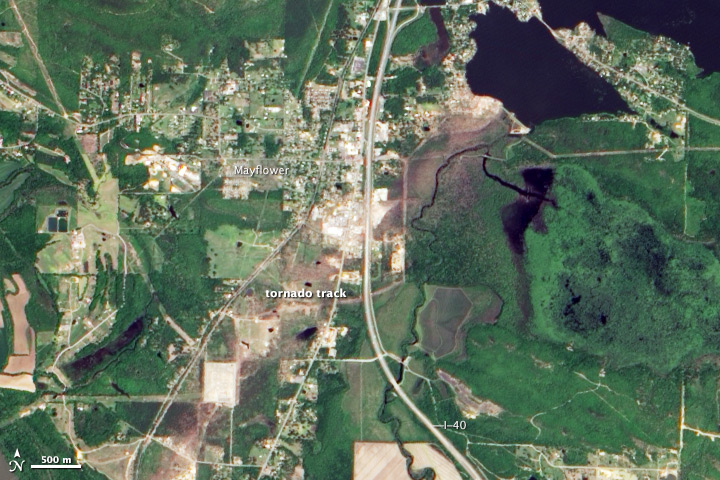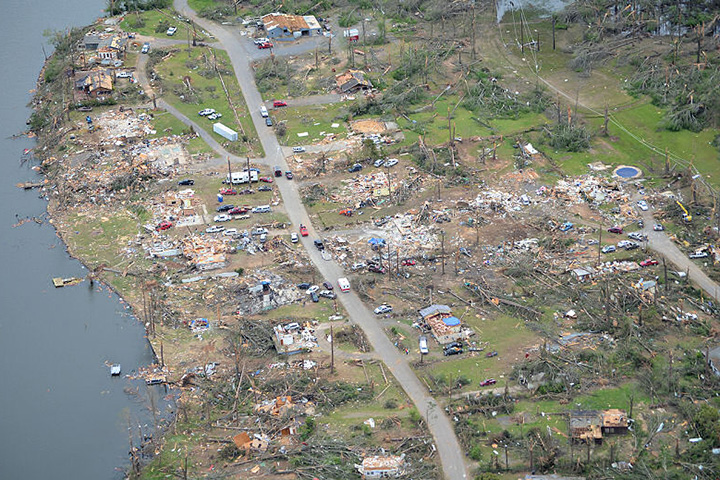Tornado damage in Mayflower, Arkansas

Early on April 27, 2014, a cold front from the Rocky Mountains descended on the Plains, fueling intense thunderstorms that spun out a powerful tornado. Beginning at 7 p.m. local time, the twister cut a swath of destruction through the small towns of Mayflower and Vilonia, Arkansas. Sixteen people were killed and 400 to 500 homes were destroyed.
The tornado left a 66 kilometer (41 mile) trail of destruction. It was classified with an EF4 rating on the Enhanced Fujita Scale, meaning it had winds that were between 267 – 322 kilometers (166 – 200 miles) per hour.
Faulkner County sheriff Andy Shock told the Associated Press there is "utter devastation," and that family members are searching for missing relatives.

Video courtesy of Brian Emfinger
A day later, the Moderate Resolution Imaging Spectroradiometer (MODIS) on NASA’s Aqua satellite detected evidence of the damage—a faint brown trail across the otherwise green landscape north of Little Rock.


Image credit: NASA / Aqua / MODIS
Since MODIS was designed to monitor broad swaths of Earth’s surface every day, its top resolution of 250 meters (820 feet) per pixel does not offer much detail. But on May 2, NASA’s Advanced Land Imager (ALI) on Earth Observing-1 (EO-1) passed over Arkansas and offered a much clearer view of the damage.
At MODIS resolution, the entire town of Mayflower is barely distinguishable; but at ALI’s top resolution of 10 meters per pixel, it is possible to distinguish between individual buildings. In this ALI image, a trail of damaged trees and homes is visible near Interstate 40. The storm moved in a northeasterly direction, hitting the southern part of Mayflower first, then crossing I-40, and flattening neighborhoods along the shore of Lake Conway.


Image credit: NASA / Advanced Land Imager (ALI) / Earth Observing-1 (EO-1)
The aerial image below, taken by meteorologists from the National Weather Service’s Little Rock office, shows damaged homes along Lake Conway. (EO)


Image credit: NWS / Little Rock
Featured image: Image credit: NASA / Advanced Land Imager (ALI) / Earth Observing-1 (EO-1)

Commenting rules and guidelines
We value the thoughts and opinions of our readers and welcome healthy discussions on our website. In order to maintain a respectful and positive community, we ask that all commenters follow these rules:
We reserve the right to remove any comments that violate these rules. By commenting on our website, you agree to abide by these guidelines. Thank you for helping to create a positive and welcoming environment for all.